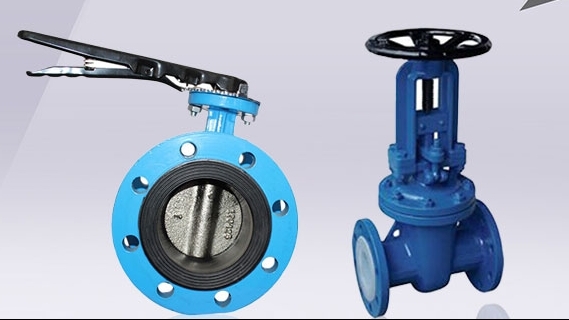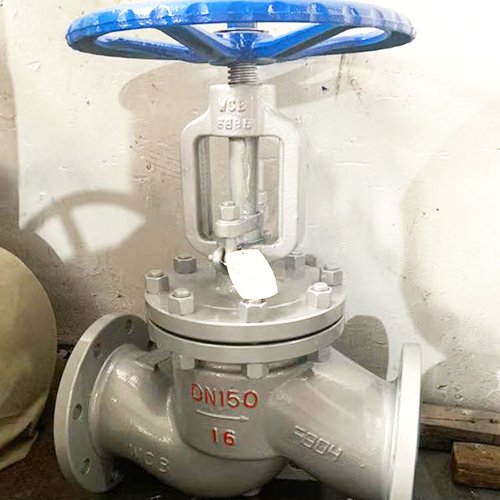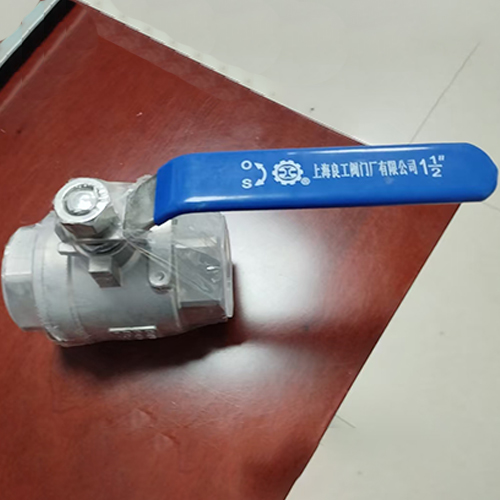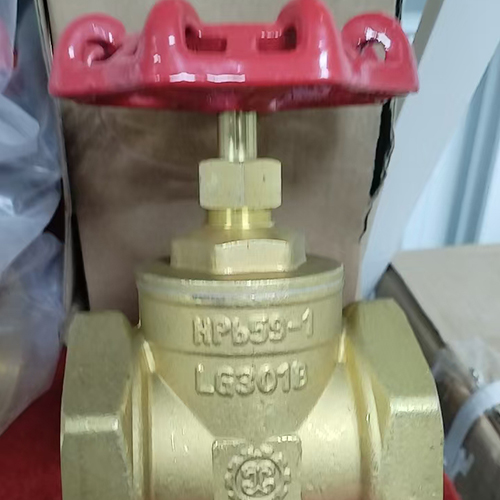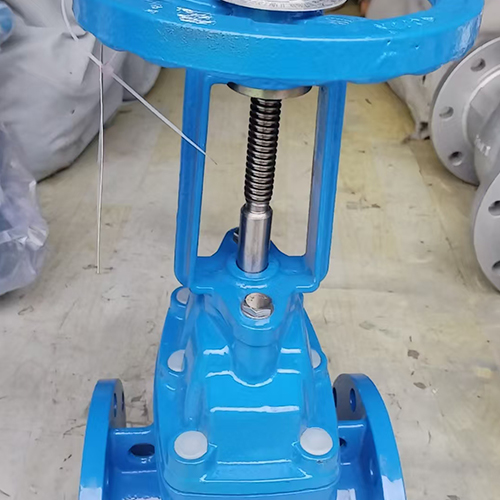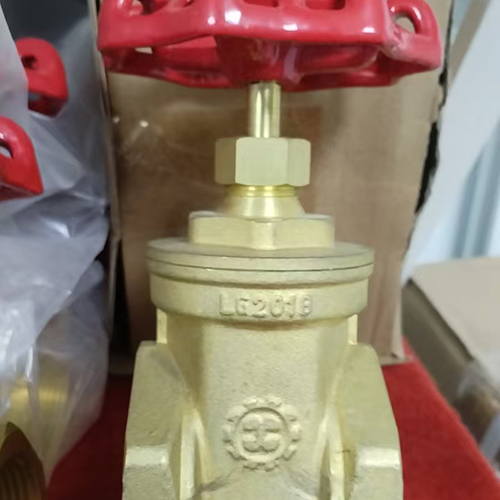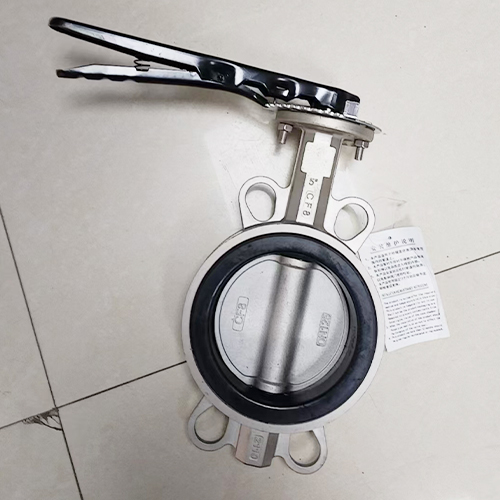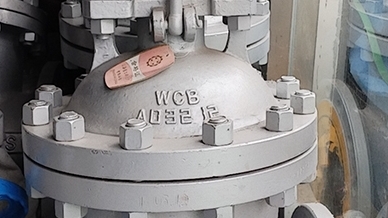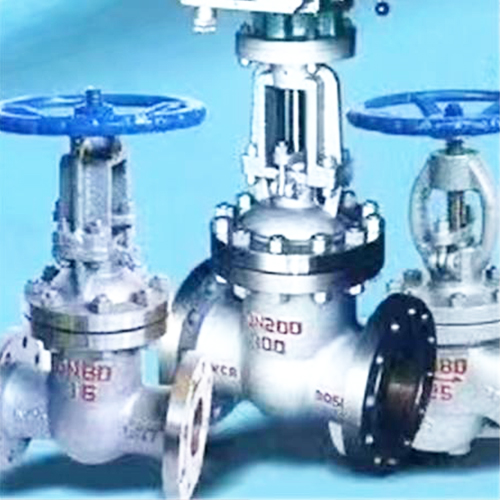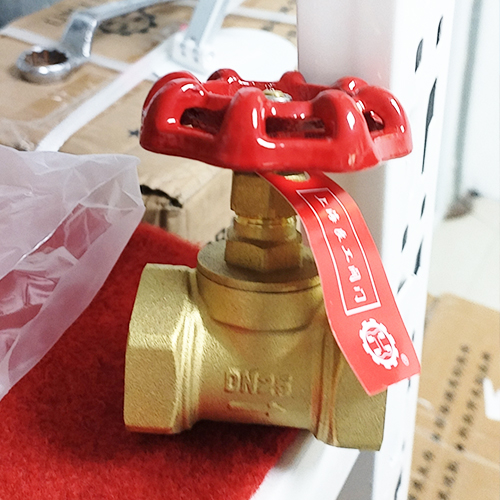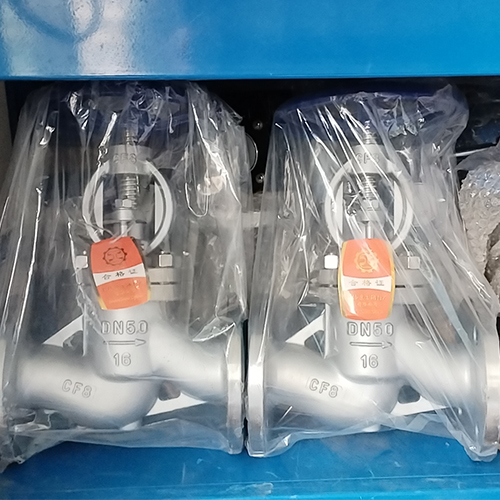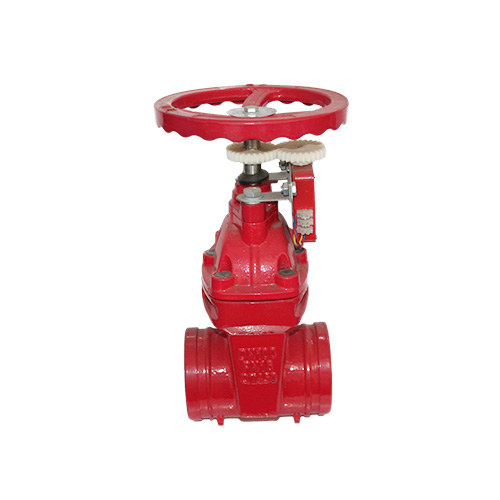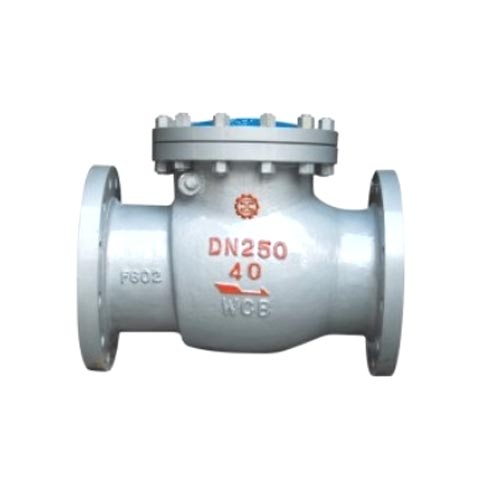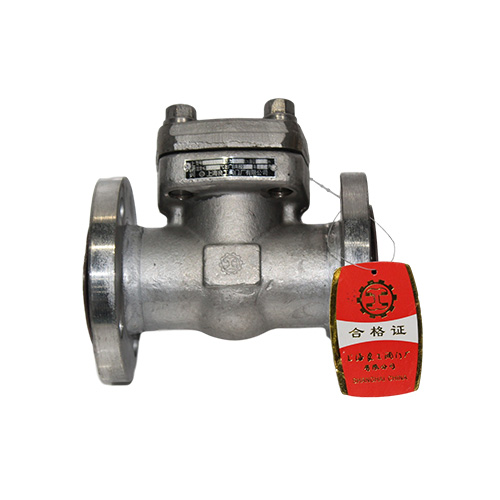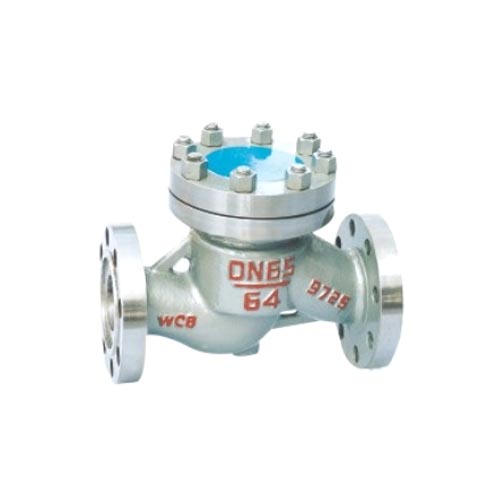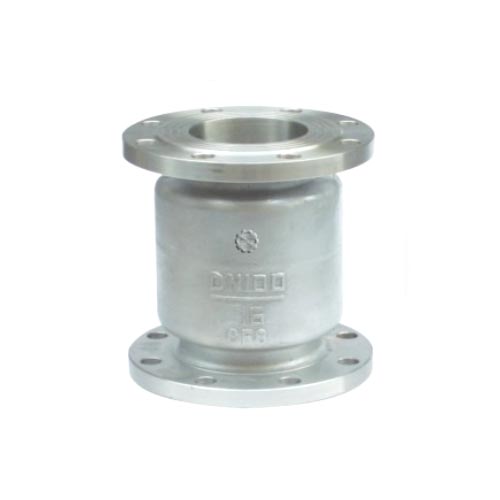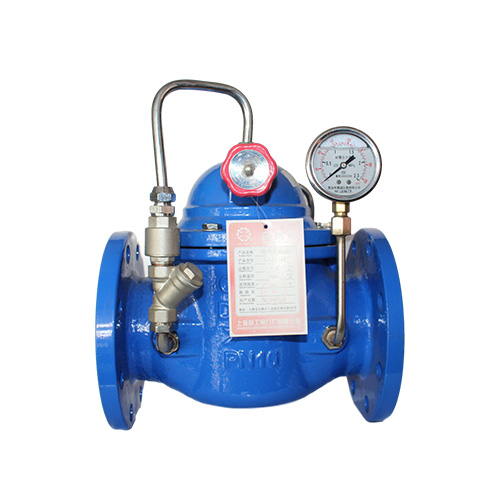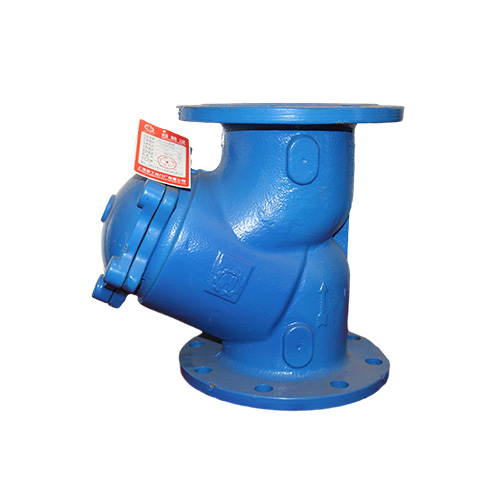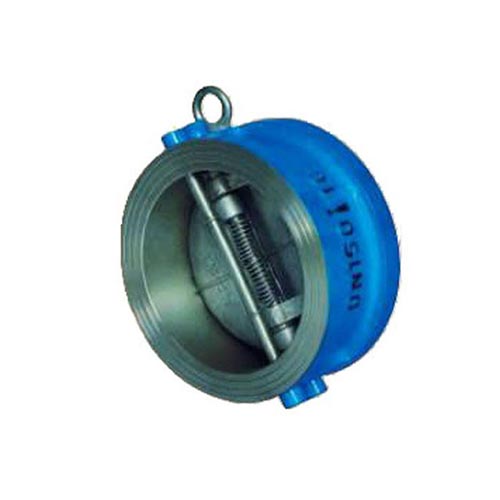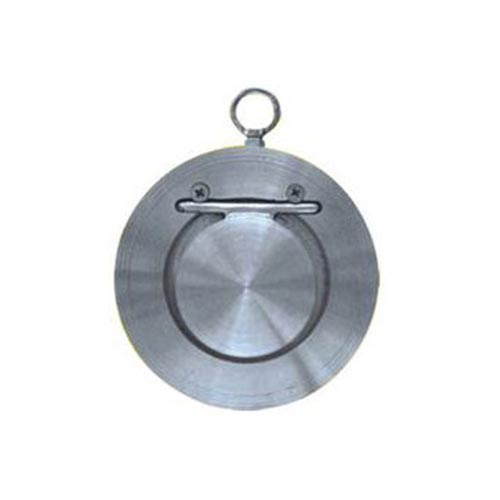低温阀是一种在低温介质中工作的阀门。随着现代科技的发展,低温工程制品的生产规模不断扩大,液氧、液氮以及液化石油气等得到广泛的应用。尤其是液化天然气越来越受到世界各国的重视。液化氨的温度-269℃,液氢的温度-254 ℃,液化氦的温度-196 ℃,液氧的温度-183 ℃,液化天然气的温度-162 ℃,以上物质的液化分馏,运输和储存都需要使用大量的低温阀门。低温阀门的用途越来越广,需求越来越大,对低温阀的技术性能和工作特性的要求也在不断提高。
Low temperature valve is a type of valve that operates in low-temperature media. With the development of modern technology, the production scale of low-temperature engineering products continues to expand, and liquid oxygen, liquid nitrogen, and liquefied petroleum gas are widely used. Especially liquefied natural gas is receiving increasing attention from countries around the world. The temperature of liquefied ammonia is -269 ℃, the temperature of liquid hydrogen is -254 ℃, the temperature of liquefied helium is -196 ℃, the temperature of liquid oxygen is -183 ℃, and the temperature of liquefied natural gas is -162 ℃. A large number of low-temperature valves are required for the liquefaction, distillation, transportation, and storage of these substances. The application of low-temperature valves is becoming more and more extensive, and the demand is increasing. The requirements for the technical performance and working characteristics of low-temperature valves are also constantly improving.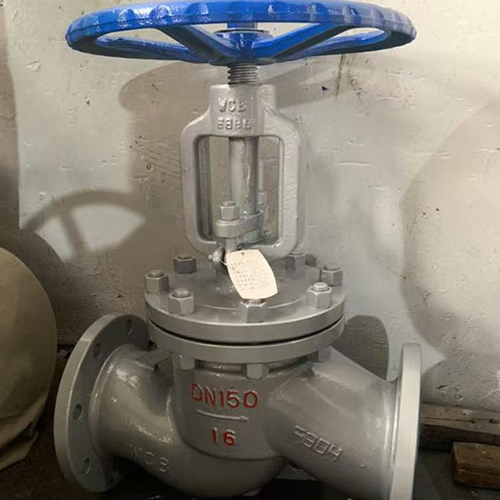
低温阀门主要有闸阀、截止阀、球阀、蝶阀、止回阀等,其主要结构与常用大致相同;但其有自身的特殊性
Low temperature valves mainly include gate valves, globe valves, ball valves, butterfly valves, check valves, etc., and their main structures are roughly the same as commonly used ones; But it has its own particularity
低温阀的温度等级:国外根据各种不同气体在常压下的液化温度一般分为六种温度级。一级二级三级四级五级六级0~-46℃-47~-60℃-61~-70 ℃-70~-101 ℃-102~-196℃-253 ℃以下
The temperature level of low-temperature valves: In foreign countries, there are generally six temperature levels based on the liquefaction temperature of various gases under normal pressure. Level 1, Level 2, Level 3, Level 4, Level 5, Level 6: 0~-46 ℃ -47~-60 ℃ -61~-70 ℃ -70~-101 ℃ -102~-196 ℃ -253 ℃ or below
一.低温阀门的特殊结构
One Special structure of low-temperature valve
1.阀体?阀体应能充分承受温度变化而引起的膨胀、收缩,且阀座部位的结构不会因温度变化而产生永久变形。
1. Valve body? The valve body should be able to fully withstand the expansion and contraction caused by temperature changes, and the structure of the valve seat should not undergo permanent deformation due to temperature changes.
2.阀盖:采用长颈阀盖结构,其目的在于能起保护填料函的功能,因为填料函的密封性是低温阀的关键之一,该处有泄漏点。这是因为在低温状态下随着温度的降低,填料弹性逐渐消失,防漏性能随之下降,由于介质渗漏造成填料与阀杆处结冰,影响阀杆正常操作,同时也会因阀杆上下移动而将填料伤,引起严重泄露。长颈阀盖结构还便于缠绕保冷材料。
2. Valve cover: Adopting a long neck valve cover structure, its purpose is to protect the packing box, because the sealing of the packing box is one of the key factors for low-temperature valves, and there are leakage points at this location. This is because at low temperatures, as the temperature decreases, the elasticity of the packing gradually disappears, and the leak proof performance decreases. Due to medium leakage, the packing and valve stem freeze, affecting the normal operation of the valve stem. At the same time, the packing may be damaged due to the up and down movement of the valve stem, causing serious leakage. The long neck valve cover structure is also convenient for wrapping cold insulation materials.
3.阀瓣(闸板):闸阀采用挠性闸板或开式闸板;截止阀的平阀座及针形阀,采用塞子形阀瓣。这些结构形式不论温度如何变化,均能保持可靠的密封。
3. Valve disc (gate): The gate valve adopts flexible gate or open gate; The flat seat and needle valve of the globe valve adopt a plug shaped valve disc. These structural forms can maintain reliable sealing regardless of temperature changes.
4.阀杆:阀杆需镀铬、镀镍磷或经氮化处理,以提高阀杆表面硬度,防止阀杆与填料、填料压套相互咬死,损坏密封填料,造成填料函泄露。
4. Valve stem: The valve stem needs to be chrome plated, nickel phosphorus plated or nitrided to improve the surface hardness of the valve stem, prevent the valve stem from biting against the packing and packing sleeve, damage the sealing packing, and cause leakage of the packing box.
5.垫片:垫片选用应考虑材料的低温性能,如压缩回弹性、予紧力、紧固压力分布以及应力松弛特性等。
5. Gasket: The selection of gaskets should consider the low-temperature performance of the material, such as compression resilience, preload force, tightening pressure distribution, and stress relaxation characteristics.
6.填料函及填料:填料函不能与低温段直接接触,而设在长颈阀盖顶端,使填料函处于离低温区较远的位置,在0℃以上的温度环境下工作,提高填料函的密封效果。填料函多采用带有中间金属隔离环的二段填料结构,可以从填料函中间加入润滑脂形成油封层,降低填料函压差。
6. Packing box and packing: The packing box should not be in direct contact with the low-temperature section, but should be placed at the top of the long neck valve cover, so that the packing box is located far away from the low-temperature area and works in a temperature environment above 0 ℃ to improve the sealing effect of the packing box. The stuffing box often adopts a two-stage stuffing structure with a middle metal isolation ring, which can add lubricating grease from the middle of the stuffing box to form an oil seal layer and reduce the pressure difference in the stuffing box.
7.上密封:低温阀都设有上密封结构,上密封要堆焊钴铬钨硬质合金,精加工后研磨。
7. Upper seal: Low temperature valves are equipped with an upper seal structure, which is welded with cobalt chromium tungsten hard alloy and polished after precision machining.
8.阀座、阀瓣、(闸板)密封面:低温阀的关闭件采用钴铬钨硬质合金堆焊机构。软密封结构由于聚四氟乙烯膨胀系数大,低温下变脆,所以仅使用温度高于-70℃的低温阀,但聚三氟乙烯可用于-162℃的低温阀。
8. Valve seat, valve disc, (gate) sealing surface: The closing parts of low-temperature valves use cobalt chromium tungsten hard alloy welding mechanism. Due to the high expansion coefficient of polytetrafluoroethylene, the soft sealing structure becomes brittle at low temperatures, so only low-temperature valves with temperatures above -70 ℃ are used. However, polytetrafluoroethylene can be used for low-temperature valves with temperatures above -162 ℃.
9.中法兰螺栓:
9. Middle flange bolts:
1):螺栓应有足够的强度,因为螺栓在反复载荷下工作,常会因疲劳而产生断裂。?? ? ? ? ? ? ? ? ? ? ? ? ? ? ??
1) Bolts should have sufficient strength because they often break due to fatigue when working under repeated loads.?? ? ? ? ? ? ? ? ? ? ? ? ? ? ??
2):因螺栓在螺纹根部易引起应力集中,所以最好采用全螺纹结构的螺栓。10.保冷:又称隔温板,是一块焊在填料函下部长颈部分的圆形板。提高保温效果。
2) Because bolts at the root of the thread are prone to stress concentration, it is best to use bolts with a full thread structure. 10. Cold insulation: also known as insulation plate, is a circular plate welded to the long neck of the lower part of the packing box. Improve insulation effect.
11. 预防异常升压的措施:?发生异常升压现象时,会使闸板紧压在阀座上,导致闸板不能开启。高压会将中法兰垫片冲出或冲坏填料;也可引起阀体、阀盖变形,使阀座密封性能显著下降。为防止异常升压现象发生,一般低温阀门在结构上采用以下措施:
11. Measures to prevent abnormal voltage rise:? When abnormal pressure rise occurs, it will cause the gate to press tightly against the valve seat, resulting in the gate not being able to open. High pressure may cause the flange gasket to be flushed out or damage the packing; It can also cause deformation of the valve body and valve cover, significantly reducing the sealing performance of the valve seat. To prevent abnormal pressure rise, the following measures are generally adopted in the structure of low-temperature valves:
1) 设置泄压孔,又称压力平衡孔或排气孔。
1) Set up pressure relief holes, also known as pressure balance holes or exhaust holes.
2)在阀门上设置引出管或安装安全阀以排出异常高压。
2) Install an outlet pipe or safety valve on the valve to discharge abnormal high pressure.
二.深冷处理
II cryogenic treatment
深冷处理:将零件浸入低温液氮箱中保温一定时间,以减少其由于温差和金相组织改变而产生的变形,从而提高阀门在低温时的密封性能的一种处理方法。
Cryogenic treatment: a treatment method that immerses parts in a low-temperature liquid nitrogen tank for a certain period of time to reduce deformation caused by temperature differences and changes in metallographic structure, thereby improving the sealing performance of valves at low temperatures.
1.在阀瓣和阀座的密封面上堆焊硬质合金应符合JB/T 6438的规定。使用温度低于-100℃时,堆焊后要进行深冷处理,即在研磨前浸在-196℃的液氮中保冷2-6h后取出自然处理,然后研磨装配。
1. Welding hard alloy on the sealing surface of the valve disc and seat shall comply with the provisions of JB/T 6438. When the operating temperature is below -100 ℃, deep cooling treatment should be carried out after welding, that is, soaking in liquid nitrogen at -196 ℃ for 2-6 hours before grinding, then taking it out for natural treatment, and then grinding and assembling.
2.用于-100℃以下的低温阀门,其阀体、阀盖、阀瓣、阀座、阀杆等零件在精加工前应进行深冷处理,即将零件浸放在液氮箱中进行冷却,当零件温度达到-196℃时,开始保温1-2h,然后取出箱外处理到常温,重复循环2次。
2. For low-temperature valves below -100 ℃, the valve body, valve cover, valve disc, valve seat, valve stem and other parts should undergo cryogenic treatment before precision machining. That is, the parts should be immersed in a liquid nitrogen box for cooling. When the temperature of the parts reaches -196 ℃, insulation should be started for 1-2 hours, and then the parts should be taken out of the box and treated at room temperature, repeating the cycle twice.
三.低温阀门的试验方法
III Test methods for low-temperature valves
1、常温试验:常温试验应符合GB/T13927、JB/T9092、API598及API
1. Room temperature test: The room temperature test should comply with GB/T13927, JB/T9092, API598, and API
6D的规定。
6D regulations.
2、低温试验:低温阀门的低温试验在常温试验合格后进行。试验前应清除阀体中的水和油脂,用符合试验要求的热电偶与阀门连接,试验过程中监测阀体、阀盖的温度。低温试验冷却介质为液氮与酒精的混合液或液氮,试验介质为氦气。
2. Low temperature test: The low-temperature test of low-temperature valves shall be conducted after passing the normal temperature test. Before the test, the water and grease in the valve body should be removed, and a thermocouple that meets the test requirements should be connected to the valve. During the test, the temperature of the valve body and valve cover should be monitored. The cooling medium for low-temperature testing is a mixture of liquid nitrogen and alcohol or liquid nitrogen, and the testing medium is helium gas.
四.低温阀门技术分解
4 Decomposition of Low Temperature Valve Technology
4.1 低温闸阀
4.1 Low temperature gate valve
闸阀是指由一个滑动的阀瓣或闸板通过阀杆由传动装置驱动,沿垂直于介质流向运动的阀门。闸阀具有双向密封、密封性能好、全开状态压降小、适用的口径及压力范围较宽等特点,在管道上主要用于切断介质,是工程中应用最广的阀门。低温闸阀的典型结构如图1所示。
A gate valve refers to a valve that is driven by a transmission device through a sliding valve disc or gate through a valve stem, and moves along a direction perpendicular to the flow of the medium. Gate valves have the characteristics of bidirectional sealing, good sealing performance, low pressure drop in fully open state, wide applicable diameter and pressure range, etc. They are mainly used in pipelines to cut off media and are the most widely used valves in engineering. The typical structure of a low-temperature gate valve is shown in Figure 1.
低温闸阀具有双阀座,阀门关闭时阀腔内会形成密闭的空间,为避免低温闸阀出现阀腔超压的问题,通常采用在闸板上开泄压孔的方式来实现阀腔泄压的功能,泄压方向在开泄压孔的那一侧;由于在闸板上开了泄压孔,低温闸阀无法满足双向密封要求,只能实现单向密封,阀门关闭时,阀门的承压(密封)方向与泄压方向相反,因此低温闸阀要根据关闭时的承压方向确定安装方向。另外,低温闸阀具有延长阀盖结构,并设置滴水盘。
Low temperature gate valves have dual valve seats, and when the valve is closed, a closed space is formed inside the valve chamber. To avoid the problem of overpressure in the valve chamber of low-temperature gate valves, a pressure relief hole is usually opened on the gate plate to achieve the function of pressure relief in the valve chamber, and the pressure relief direction is on the side where the pressure relief hole is opened; Due to the opening of pressure relief holes on the gate, low-temperature gate valves cannot meet the requirements of bidirectional sealing and can only achieve unidirectional sealing. When the valve is closed, the pressure bearing (sealing) direction of the valve is opposite to the pressure relief direction. Therefore, the installation direction of low-temperature gate valves should be determined based on the pressure bearing direction when closed. In addition, the low-temperature gate valve has an extended valve cover structure and is equipped with a drip tray.
4.2 低温截止阀
4.2 Low temperature shut-off valve
截止阀是指启闭件(阀瓣)由阀杆带动,沿阀座(密封面)轴线作升降运动的阀门。截止阀的阀杆开启或关闭行程相对较短,而且具有可靠的切断功能,因此,非常适合作为切断使用,也适合作为调节或节流使用。截止阀属于阀瓣强制密封,开启和关闭时所需力较大,因此,对于大口径和高压管道一般不采用截止阀。低温截止阀的典型结构如图2所示。
Globe valve refers to a valve whose opening and closing components (valve disc) are driven by the valve stem and move up and down along the axis of the valve seat (sealing surface). The stem of a globe valve has a relatively short opening or closing stroke and reliable shut-off function, making it very suitable for use as a shut-off valve, as well as for regulating or throttling. Globe valves belong to valve disc forced sealing, and require a large amount of force to open and close. Therefore, globe valves are generally not used for large-diameter and high-pressure pipelines. The typical structure of a low-temperature shut-off valve is shown in Figure 2.
低温截止阀属于单阀座密封,阀门关闭时阀腔内不会形成密闭的空间,因此不需要设置泄压装置。低温截止阀关闭时,阀门的承压(密封)方向与常温截止阀相同,没有特殊安装要求。低温截止阀具有延长阀盖结构,并设置滴水盘。
Low temperature globe valves belong to single seat sealing, and when the valve is closed, there will be no sealed space in the valve chamber, so there is no need to install a pressure relief device. When the low-temperature shut-off valve is closed, the pressure bearing (sealing) direction of the valve is the same as that of the normal temperature shut-off valve, and there are no special installation requirements. The low-temperature shut-off valve has an extended valve cover structure and is equipped with a drip tray.
4.3 低温球阀
4.3 Low temperature ball valve
球阀的启闭件是一个球体,利用球体绕阀杆的轴线旋转90°实现开启和关闭的目的。球阀具有双向密封、密封性能好、低流阻、结构紧凑、操作方便等特点。管道上主要用于切断、分配和改变介质流动方向,设计成“V”形开口的球阀还具有良好的流量调节功能。低温球阀的典型结构如图3所示。
The opening and closing component of a ball valve is a sphere that rotates 90 degrees around the axis of the valve stem to achieve the purpose of opening and closing. Ball valves have the characteristics of bidirectional sealing, good sealing performance, low flow resistance, compact structure, and easy operation. The pipeline is mainly used to cut off, distribute, and change the direction of medium flow. The ball valve designed with a "V" opening also has good flow regulation function. The typical structure of a low-temperature ball valve is shown in Figure 3.
低温球阀具有双阀座,阀门关闭时阀腔内会形成密闭的空间,为避免低温球阀出现阀腔超压的问题,通常采用以下2种方式来实现阀腔泄压功能:①在球体上开泄压孔的方式,泄压方向在开泄压孔的那一侧;②通过设计泄压阀座来实现阀腔泄压,泄压方向可以是上游阀座方向,也可以是下游阀座方向。对于在球体上开泄压孔的低温球阀,无法满足双向密封的要求,只能实现单向密封,阀门关闭时,阀门的承压(密封)方向与泄压方向相反,因此低温球阀要根据关闭时的承压方向来确定安装方向。另外,低温球阀具有延长阀盖结构,并设置滴水盘。
Low temperature ball valves have dual seats, and when the valve is closed, a closed space is formed inside the valve chamber. To avoid the problem of overpressure in the valve chamber of low-temperature ball valves, the following two methods are usually used to achieve the pressure relief function of the valve chamber: ① opening a pressure relief hole on the ball, and the pressure relief direction is on the side where the pressure relief hole is opened; ② By designing a pressure relief valve seat to achieve valve chamber pressure relief, the pressure relief direction can be either the upstream valve seat direction or the downstream valve seat direction. For low-temperature ball valves with pressure relief holes on the sphere, the requirement for bidirectional sealing cannot be met, and only unidirectional sealing can be achieved. When the valve is closed, the pressure bearing (sealing) direction of the valve is opposite to the pressure relief direction. Therefore, the installation direction of low-temperature ball valves should be determined based on the pressure bearing direction when closed. In addition, the low-temperature ball valve has an extended valve cover structure and is equipped with a drip tray.
4.4 低温蝶阀蝶阀的启闭件是一个圆盘形的蝶板,在阀体内绕其自身的轴线旋转,从而达到启闭或调节。蝶阀具有结构简单、流阻小、启闭迅速、启闭力矩小、体积小、质量轻等特点,但密封性能相对于闸阀较差,常用于密封要求不是很高的大口径管道上。低温蝶阀的典型结构如图4所示。
The opening and closing component of a low-temperature butterfly valve is a disc-shaped butterfly plate that rotates around its own axis inside the valve body to achieve opening, closing, or adjustment. Butterfly valves have the characteristics of simple structure, low flow resistance, rapid opening and closing, small opening and closing torque, small volume, and light weight. However, their sealing performance is relatively poor compared to gate valves, and they are commonly used in large-diameter pipelines with low sealing requirements. The typical structure of a low-temperature butterfly valve is shown in Figure 4.
低温蝶阀关闭时阀腔内不会形成密闭的空间,因此不需要设置泄压装置。低温蝶阀关闭时,阀门的承压(密封)方向与常温蝶阀相同,没有特殊安装要求。低温蝶阀具有延长阀盖结构,并设置滴水盘。
When the low-temperature butterfly valve is closed, no sealed space will be formed inside the valve chamber, so there is no need to install a pressure relief device. When the low-temperature butterfly valve is closed, the pressure bearing (sealing) direction of the valve is the same as that of the normal temperature butterfly valve, and there are no special installation requirements. The low-temperature butterfly valve has an extended valve cover structure and is equipped with a drip tray.
低温闸阀、截止阀、球阀及蝶阀具有延长阀盖、滴水盘等结构特点,其中对于具有密闭阀腔的闸阀、球阀等阀门,需要在阀门上设置泄压装置。对于有延长阀盖的低温阀门宜安装在水平管道上,或应在水平面上与水平面成不小于45°的方向操作阀杆。对于低温截止阀、蝶阀其安装流向与常规的阀门一样;低温闸阀、球阀具有泄压装置,阀门安装后的泄压箭头应指向阀门关闭状态下压力高的一侧。针对石油化工装置管道低温阀门容易发生流向安装错误的问题,建议从工艺和管道设计、阀门制造、安装施工、运行管理等环节入手,确保低温阀门的正确安装。
Low temperature gate valves, globe valves, ball valves, and butterfly valves have structural characteristics such as extended valve covers and drip trays. For gate valves, ball valves, and other valves with closed valve chambers, pressure relief devices need to be installed on the valves. For low-temperature valves with extended valve covers, they should be installed on horizontal pipelines, or the valve stem should be operated in a direction not less than 45 degrees from the horizontal plane. For low-temperature globe valves and butterfly valves, their installation flow direction is the same as that of conventional valves; Low temperature gate valves and ball valves have pressure relief devices, and the pressure relief arrow after valve installation should point to the side with higher pressure when the valve is closed. It is recommended to start with process and pipeline design, valve manufacturing, installation and construction, and operation management to ensure the correct installation of low-temperature valves in petrochemical equipment pipelines, which are prone to flow direction installation errors.
本文由 上海良工阀门山东销售处 友情奉献.更多有关的知识请点击 http://www.jnlgvf.com/ 真诚的态度.为您提供为全面的服务.更多有关的知识我们将会陆续向大家奉献.敬请期待.
This article is a friendly contribution from Shanghai Lianggong Valve Shandong Sales Office For more related knowledge, please click http://www.jnlgvf.com/ Sincere attitude To provide you with comprehensive services We will gradually contribute more relevant knowledge to everyone Coming soon.
 企业公告:
企业公告:

